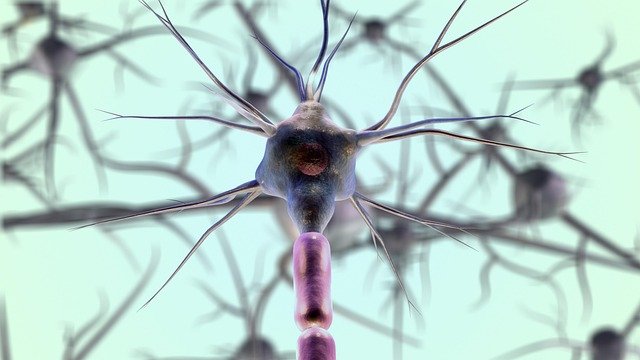When someone loses a hand or arm, it’s not just the body that changes. The brain changes too. But here’s the good news—our brains can learn, grow, and adapt. This ability is called neuroplasticity. It means your brain can build new paths and reconnect with muscles and movements, even after an amputation. And this is what makes prosthetic training possible.
Now, you might think training your brain to work with a prosthetic needs expensive tools or high-tech machines. It doesn’t. At RoboBionics, we’ve helped people all across India learn to use bionic hands like Grippy™ using simple, low-cost methods that work. No fancy equipment. Just smart training, care, and consistency.
In this guide, we’re going to show you exactly how to tap into your brain’s power to train with a prosthetic limb—even if you’re at home, in a small clinic, or somewhere without advanced rehab tools. It’s simple, clear, and you can start today.
Let’s dive in.
What Is Neuroplasticity and Why Does It Matter?
Your Brain Is Always Changing
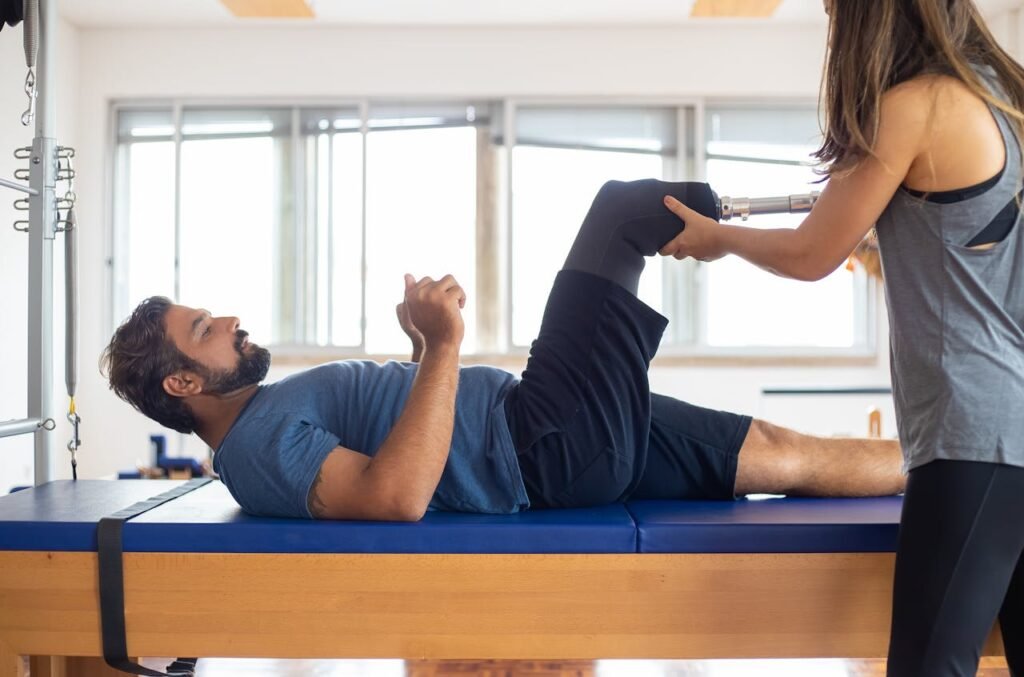
Neuroplasticity sounds like a big word, but it simply means your brain can change.
Even if you lose a part of your body, the brain doesn’t shut down. It starts looking for new ways to do things.
It rewires itself to adjust to the new situation.
This is how people learn to walk again, speak after a stroke, or in our case—use a prosthetic hand.
Muscles and Mind Must Work Together
When you get a prosthetic hand, it’s not like plugging in a machine.
Your brain has to learn to control it using the small signals from your muscles. These are called myoelectric signals.
Your brain already knows how to move a hand—it’s been doing that for years. But now, it has to connect that old knowledge to a new tool.
This learning takes time, practice, and most importantly, patience.
Why Fancy Equipment Isn’t Always Necessary
Most Real Progress Happens Outside the Lab
Sure, big hospitals have high-tech gadgets. But they aren’t what make the biggest difference.
Real progress happens when you repeat small movements, again and again, until they become natural.
You can do that in your living room. Or at a small rehab center. Or even on a park bench.
What matters is your dedication, not the devices.
The Brain Learns Through Repetition
Let’s say you want to learn to write with your non-dominant hand.
At first, it feels awkward. But with practice, it starts to feel normal.
The same thing happens when your brain is learning to use a prosthetic. It just needs clear, regular signals.
The more you use those muscles, the clearer the signals become. And the better your control gets.
Building a Strong Mind-Muscle Connection
Step 1: Know Where Your Muscles Are
Even before you wear your prosthetic, you can start training your brain.
First, find the muscles in your residual limb (the part that remains after amputation).
Try to move your “phantom” fingers. You may feel strange at first, but this is your brain trying to send signals like it used to.
Feel around your limb. When you imagine a finger movement, which muscle contracts?
This is where your signal will come from when using a myoelectric hand like Grippy™.
Step 2: Mirror Therapy
One of the oldest and most powerful brain training tools is a simple mirror.
Place a mirror so it reflects your healthy hand. Then move that hand while imagining you’re moving the missing one.
The brain sees the movement and starts to believe both hands are working.
This tricks the brain in a good way. It reduces phantom pain and strengthens the brain-muscle connection.
You don’t need anything fancy. Just a mirror and your imagination.
Training With a Prosthetic Without Machines
Step 3: Isolate and Activate Muscles

Once you know which muscles give the signals, practice moving them alone.
Don’t worry if the movements are small. What matters is that you can repeat them.
You can touch your muscles to feel them tighten. This gives you feedback.
When you practice often, the brain gets better at sending strong, clean signals.
Even 10 minutes a day makes a huge difference.
Step 4: Use a Soft Object
Take a soft sponge or ball. Try holding it using your prosthetic, even if it feels clumsy.
Hold. Release. Hold. Release.
These small actions create new brain connections. They teach your brain that this new hand belongs to you.
As you improve, try harder objects or different shapes.
This isn’t just about strength. It’s about control.
Creating a Simple Daily Routine
Morning Routine: Wake Up the Muscles
Start your day by waking up your muscles.
Do gentle stretches with your residual limb.
Then, spend 5 minutes doing phantom hand movements.
This tells your brain: “Hey, we’re still here. We’re still working.”
It builds consistency and confidence.
Afternoon Focus: Practice With Purpose
Choose one simple task—like picking up a pencil or lifting a cup.
Focus only on that task.
Move slowly. Try not to get frustrated.
Each small success tells your brain, “This works.”
Even one good repetition is a win.
Evening Wind Down: Reflect and Relax
At night, think about what worked and what didn’t.
Visualize yourself doing better tomorrow.
This helps your brain continue learning—even while you sleep.
You can even do some light mirror therapy to close your day.
How Family and Caregivers Can Help
Emotional Support Goes a Long Way

Learning to use a prosthetic is hard work. It takes time.
When family members encourage instead of rushing, it helps.
A simple, “You’re doing great,” gives a big boost.
Even sitting nearby during practice can make a difference.
Gentle Reminders and Praise
Sometimes, people forget to practice.
That’s okay. A kind reminder helps more than pressure.
And when they do well—even a little—celebrate it.
The brain learns better when it feels safe, supported, and hopeful.
Turning Everyday Objects Into Training Tools
The Kitchen Is Your Gym
You don’t need a lab to train. A kitchen can be your training ground.
Try holding a spoon. Stirring. Lifting a cup. Pressing a button on the microwave.
Each of these actions teaches control, grip strength, and timing.
Start slow. Stay patient.
Use Toys, Towels, and Buttons
A small toy can be great for hand training. Try picking it up, turning it around, or placing it down gently.
A rolled-up towel helps you practice grip and release.
Even buttoning a shirt is excellent training—it builds fine motor skills.
Your brain doesn’t care what you’re holding. It cares how you practice.
Mistakes to Avoid When Training
Trying to Rush the Process
One of the biggest mistakes is trying to do too much, too soon.
If you push too hard, your muscles get tired. Your brain gets confused.
This leads to frustration. And frustration can stop progress.
Take breaks. Breathe. Start again.
Small steps bring big changes over time.
Ignoring the “Feeling” Part
Grippy™ has Sense of Touch™ technology, which gives feedback through vibrations.
But even before that, you must learn to feel pressure, grip, and release.
If you only focus on movement and forget about sensation, progress is slower.
Feel the object. Understand its texture and weight.
The brain loves details. The more you pay attention, the faster it adapts.
How to Track Your Progress Without Fancy Tools
Use a Simple Notebook
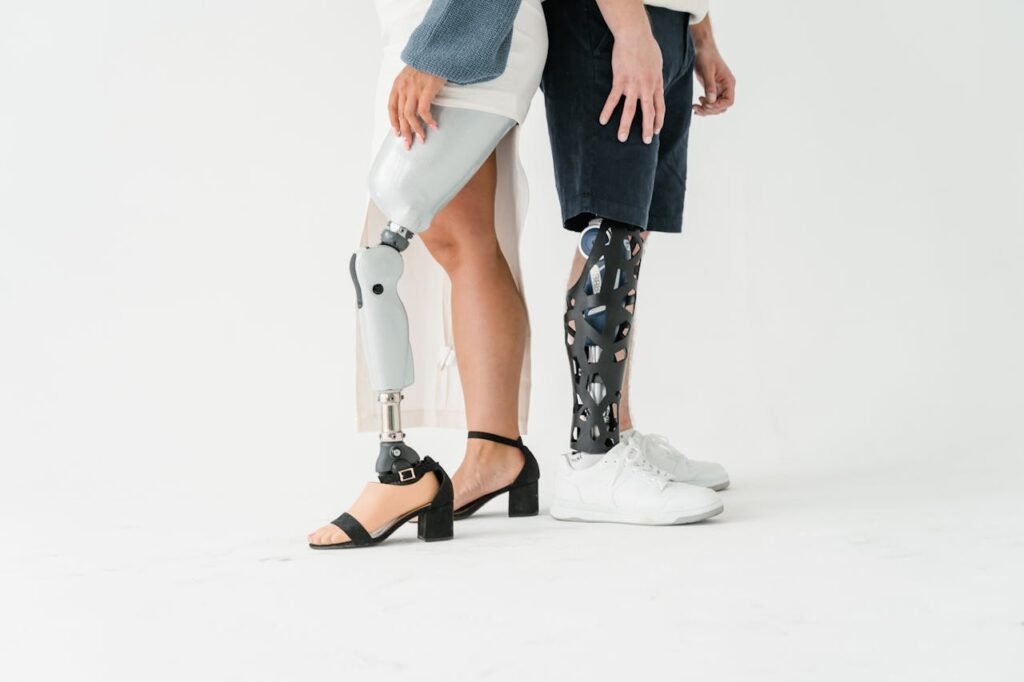
Write down what you practiced each day.
Note what felt easy, and what felt hard.
This helps you see how far you’ve come—even when progress feels slow.
Looking back at your first notes can be incredibly motivating.
Record Short Videos
If you have a phone, record yourself once a week.
You’ll notice improvements you didn’t even feel.
It’s like watching a plant grow—you don’t see it every day, but over time, the change is clear.
This is also helpful for your prosthetist to understand your journey.
Building Habits That Stick
Why Consistency Is More Important Than Intensity
You don’t have to train for hours every day. In fact, it’s better to practice for just 15–20 minutes daily than to do a long session once a week.
Your brain learns best with short, repeated signals. Think of it like watering a plant a little every day instead of flooding it once a month.
By keeping your routine light and regular, you avoid stress and burnout. And your body starts to trust the process.
Make Training Part of Daily Life
One of the easiest ways to stay consistent is to link training with daily activities.
For example, practice grip and release every time you make tea or fold clothes. Try buttoning your shirt using your prosthetic. These are real, useful actions that reinforce learning.
When training becomes part of your normal day, it doesn’t feel like a task. It becomes who you are.
Understanding the Role of Mental Practice
The Brain Doesn’t Know the Difference
Here’s a powerful trick: imagine yourself doing the movement, even if you’re not actually doing it.
Your brain responds to mental practice almost the same way as physical practice. That’s why athletes, musicians, and even surgeons use it to improve skills.
Spend 5 minutes visualizing your hand opening, closing, holding, and lifting. Do this when you’re lying in bed or sitting on a bus. It works.
Combine It With Real Movements
Mental practice works best when you combine it with physical practice.
So, imagine a movement first. Then, try it for real.
This double practice—first in the mind, then in the muscle—supercharges your brain’s learning.
You’re building new pathways, brick by brick, every time.
Managing Frustration and Staying Motivated
Progress Can Be Slow—And That’s Okay
It’s natural to feel frustrated when things don’t work the way you want them to. But slow progress isn’t failure. It’s just part of the journey.
Some days will feel amazing. Other days, you might want to give up.
But every time you try again, you’re winning. You’re teaching your brain to believe in your new hand, and in yourself.
Set Tiny, Clear Goals
Don’t say, “I want to use my prosthetic perfectly.” That’s too big.
Say, “Today I want to hold a toothbrush for 5 seconds.” Or “I’ll practice picking up a coin five times.”
When you hit these small goals, your brain gets a reward—a little boost of confidence.
And many small wins add up to big success.
The Role of Rest in Brain Training
Rest Helps the Brain Learn Faster
You might think more practice means faster results. But rest is just as important.
During rest, your brain organizes everything it just learned. It sorts, stores, and strengthens those new pathways.
So make sure to take breaks during training. And get good sleep at night.
You’re still learning, even when you’re doing nothing.
Avoid Overuse and Fatigue
Using a prosthetic is like using a new muscle you’ve never trained before.
If you overuse it, you might get sore, tired, or discouraged.
Listen to your body. Stop when it says stop. Come back when you feel ready.
This is a marathon, not a sprint.
How Grippy™ Makes Training Easier
Designed With the Brain in Mind
Grippy™ isn’t just a prosthetic. It’s built to work with your brain.
It reads myoelectric signals smoothly, so the hand responds just the way you want it to.
And because it’s lightweight, it doesn’t wear you down. That means longer training, less strain, and better results.
Feel What You’re Holding With Sense of Touch™
Most prosthetics don’t give feedback. You grab something, but you don’t know how hard or soft you’re holding it.
Grippy™ changes that. Its patent-pending Sense of Touch™ technology sends gentle feedback, like a tap or vibration, to your arm.
This helps your brain “feel” again. And feeling leads to control.
You stop dropping things. You stop crushing delicate items. You start trusting your hand.
Staying Hopeful Through the Journey
You’re Not Alone
If you’ve lost a limb, it’s easy to feel alone. But you’re not.
Thousands of people across India are learning to use prosthetics every day—some in big cities, others in small towns.
They face the same fears, doubts, and challenges. And they’re overcoming them, one step at a time.
You can too.
Every Step Forward Is a Victory
Using a prosthetic isn’t about perfection. It’s about progress.
Each time you open your hand, each time you pick something up, that’s a moment of victory.
Celebrate it. Let it fill you with strength. Because it means your brain is learning, your muscles are growing, and your future is getting brighter.
When to Ask for Help
Know the Signs
Sometimes, you might feel stuck. You’ve been trying, but nothing’s improving.
That’s when it’s time to talk to your prosthetist or therapist.
They can adjust your training plan, check the fit of your prosthetic, or give you new ideas.
You don’t have to figure everything out alone.
Online Help Is Available Too
Even if you live far from a rehab center, help is closer than you think.
Many groups—including RoboBionics—offer video support, demo sessions, and online training tips.
We’re here to guide you. Anytime. Anywhere.
You can even schedule a one-on-one demo with our team at robobionics.store/bookdemo
We want you to succeed—and we’ll walk with you every step of the way.
Turning Simple Tools Into Powerful Brain Trainers
Resistance Bands, Towels, and Household Items
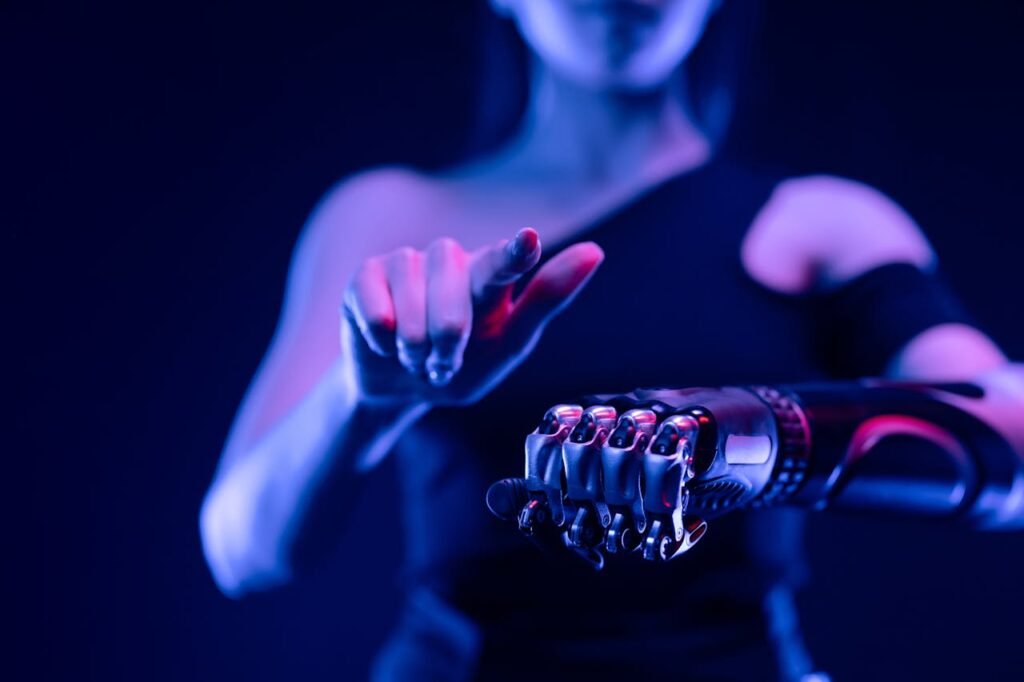
You don’t need machines or high-tech tools to build control. A soft resistance band can be used to strengthen the muscles in your residual limb. You can loop it around your arm and gently pull to create tension. This not only wakes up dormant muscle groups but also teaches your brain how to send stronger, more accurate signals.
A rolled-up towel can do wonders too. Squeeze it slowly with your prosthetic. Focus on applying even pressure and then releasing it in a controlled way. These simple movements train both strength and timing. Even something as basic as picking up coins from a table can teach precision. Try using different-sized objects throughout the day. This keeps your brain alert and constantly learning.
Create Your Own Obstacle Course
At home, you can set up a small training path using common items. Place a few cups on a table. Move them from one side to another using your prosthetic. Add a spoon, a key, or a small ball. Each shape and weight brings a new challenge for your hand and your brain. This kind of real-world training helps your brain understand grip, pressure, and coordination more effectively than a machine ever could.
What’s most important here is consistency. You don’t have to do it perfectly—you just have to do it daily.
The Hidden Power of Breathing and Focus
Staying Calm Improves Control
Many people don’t realize how closely the brain’s ability to learn is tied to our emotional state. When you’re stressed or anxious, your brain becomes less open to change. That’s bad news for neuroplasticity.
Before training, take a few slow, deep breaths. This calms your nervous system and improves focus. You’ll notice that when your mind is calm, your prosthetic responds better to your signals. Your grip will be more stable, your movements smoother. Add a short breathing exercise before and after each session to maximize your results.
Mindfulness During Movement
Instead of rushing through repetitions, slow down and focus on the details. Notice how the prosthetic responds. Pay attention to how your muscles feel when you try to open or close the hand. This kind of mindfulness turns a regular session into a powerful brain training experience. You’re not just building muscle memory—you’re rewiring your brain.
How Children Can Benefit From the Same Techniques
Kids Learn Through Play
Children with limb differences can benefit from neuroplasticity-based training just like adults—but they don’t have to sit through boring sessions. Kids learn best through play. Toys, games, puzzles, and fun activities can help them build the same brain-hand connection in a joyful way.
Stacking blocks, using crayons, or opening snack packets all offer chances to strengthen grip and precision. The key is to keep it light, fun, and free of pressure. When kids enjoy the process, their brains absorb lessons even faster.
Make Progress a Game
Turning training into a game makes it more engaging for young users. Set mini-challenges: How many small objects can you move in one minute? Can you draw a smiley face with your prosthetic? Make a simple progress chart and celebrate wins—no matter how small. These positive experiences build confidence and reinforce the connection between brain and bionic hand.
At RoboBionics, we also offer a gamified rehabilitation app that makes this even easier. It turns serious therapy into interactive play, helping kids stay motivated and consistent.
Community Support: A Quiet Superpower
Sharing Stories Builds Strength
The journey of prosthetic training can feel isolating. But when people connect and share their stories, it becomes easier. Whether you’re joining an online support group or simply talking to someone else with a prosthetic, these conversations matter.
You learn new tips. You get reassurance that slow days are normal. And most importantly, you remember that you’re not alone. If you’re a caregiver or friend, encouraging this kind of community connection can go a long way in boosting morale and sticking with the training.
Inspiration Creates Momentum
When you hear someone else talk about how they finally picked up a spoon or typed a message with their prosthetic, it sparks something in you. That spark leads to hope. And hope is the fuel for all transformation. At RoboBionics, we’ve seen countless users across India overcome the odds—and each one of them started with the basics, just like you.
That sense of shared experience helps the brain stay optimistic, which keeps the learning process alive and active.
Avoiding Burnout and Staying Engaged
Change the Routine When It Gets Boring
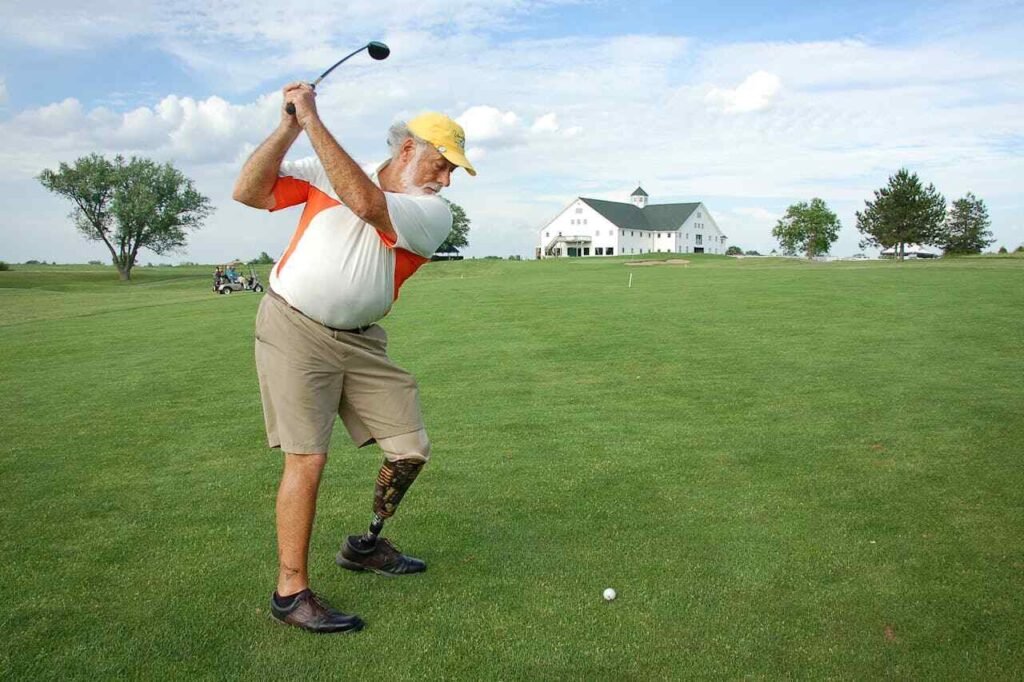
Doing the same training every day can make you lose interest. If you start feeling bored or stuck, it’s okay to switch things up. Try practicing at a different time of day. Use new objects. Change your environment. Even playing your favorite music during training can change the energy.
Small changes reawaken your brain and keep it engaged. The goal is to keep going, even if it’s in a new direction. There’s no perfect routine—there’s only what works for you.
Celebrate the Wins—No Matter How Small
Sometimes we wait for big victories before feeling proud. But with prosthetic training, even the tiniest win deserves a celebration. Did you manage to hold a cup today without dropping it? That’s a big deal. Did your muscles twitch on command? That’s progress. Recognizing these steps keeps you motivated.
Keep a journal. Take a picture. Share a message with a friend. These actions reinforce the brain’s learning and make the journey more joyful.
What to Expect Over Time
Week by Week, Change Adds Up
In the first few days of training, you may feel unsure or disconnected. That’s completely normal. The brain is exploring new territory, and it takes time to build confidence.
By the end of the first week, your signals may start to feel more consistent. Maybe your prosthetic responds a little faster. Maybe your grip feels slightly firmer.
In the second and third weeks, those tiny wins begin to add up. You might find it easier to hold light objects or perform basic tasks. You’ll also feel more connected to your prosthetic—not just physically, but mentally.
Within a month or two, many users start seeing real breakthroughs. Holding a phone, lifting a spoon, opening a door—these become possible. And they become smoother with each passing day.
Everyone’s timeline is different. What matters is showing up, practicing, and trusting the process.
Your Brain Is Learning Even When You Don’t See It
There will be days when you feel stuck. You’ll wonder if anything is improving. This is part of how the brain works.
Sometimes, the biggest changes happen just beneath the surface. Your brain might be reorganizing, fine-tuning, or preparing for a leap forward.
Don’t let slow days discourage you. Often, a breakthrough comes right after a period of frustration. Stick with it. Your effort is never wasted.
A Quick Recap: No Fancy Tools Needed
- You can train your brain using simple, everyday actions like picking up objects or using a mirror.
- Repetition is key. Short, daily sessions are more effective than occasional long ones.
- Emotional calm and mental focus boost your learning ability.
- You can build grip strength, coordination, and confidence using towels, spoons, coins, and even crayons.
- Children benefit from playful, creative training methods that don’t feel like therapy.
- Staying in touch with others on the same path keeps you encouraged and inspired.
- Progress may be slow, but it’s always building beneath the surface.
You don’t need expensive equipment to make neuroplasticity-based prosthetic training work. What you really need is consistency, care, creativity—and belief in your own ability to adapt and grow.
You Have the Power to Rewire Your Brain
When you lost your limb, it might have felt like you lost a part of yourself. But the truth is, your body is still full of possibility. Your brain is waiting, ready to rebuild. Ready to relearn. Ready to take back control.
The journey won’t always be easy. But every small step brings you closer to freedom, confidence, and independence.
Grippy™ is here to help you get there—not just with advanced prosthetic technology, but with our full support, care, and training guidance.
You can do this. You already have everything you need to begin.
And if you ever want help, a friendly hand, or just someone to talk to—you can schedule a free demo with our team anytime at robobionics.store/bookdemo
We’d love to hear your story. And help you write the next chapter—one strong, steady step at a time.



